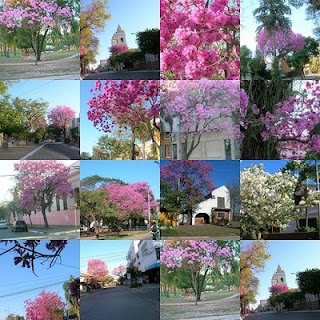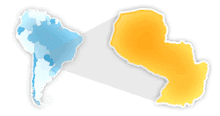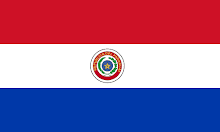
Tereré is an infusion of
yerba mate (in Spanish) / erva-mate (in Portuguese), similar to
mate but prepared with cold water (rather than with hot water), and in a slightly larger vessel. It is ubiquitous in
Paraguay.
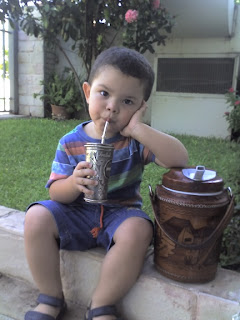
The vast majority of people in Paraguay take their tereré with water infused remedial herbs such as
mint "menta-i" or
lemongrass. When not prepared with plain cold water,
citrus fruit juices are usually used, although this practice varies depending on the region.


First invented by the
Guaraní natives who lived in Paraguay, tereré was spread by the dwellers of that region, and for centuries was a social beverage. People usually prepare one jar of natural water and a "guampa" (Spanish) with a "bombilla" (Spanish) which is shared among the group of people. Since Paraguay have a very hot climate, this drink is excellent to refresh the body and can be considered a very low-calorie, non-alcoholic beverage. Additionally, it is an important ritual signifying trust and communion.
Bombillas are metal straws with a filter at the end, the Yerba is placed at the bottom of the guampa, and as water is added the bombilla drinks from the guampa the clear green liquid.
El tereré no es una bebida...
Bueno, sí. Es un líquido y entra por la boca. Pero no es una bebida.
En el Paraguay nadie toma tereré porque tenga sed exactamente. Es más bien una costumbre, como rascarse. El tereré es exactamente lo contrario que la televisión. Te hace conversar si estás con alguien, y te hace pensar cuando estás solo.
Cuando llega alguien a tu casa la primera frase es hola y la segunda ¿tereré?.
Esto pasa en todas las casas. En la de los ricos y en la de los pobres.

Pasa entre mujeres serias o chismosas, y pasa entre hombres serios o inmaduros. Pasa entre los viejos de un geriátrico o entre los adolescentes mientras estudian. Es lo único que comparten los padres y los hijos sin discutir ni echarse nada en cara.
Cuando tienes un hijo, le empiezas a dar tereré cuando lo pide, y se sienten grandes. Sientes un orgullo enorme cuando ese enanito de tu sangre empieza a tomarlo. Sentís que se te sale el corazón del cuerpo. Después ellos, con los años, elegirán si tomarlo solo, con yuyos, con un chorrito de limón.Cuando conoces a alguien por primera vez, siempre dices, si quieres ve a casa vamos a tomar tereré. La gente pregunta, cuando no hay confianza: con limón, muy frió o no? El otro responde: Como a ti te guste.
Los teclados de las computadoras tienen las letras llenas de yerba.
La yerba es lo único que hay siempre, en todas las casas. Siempre. Con inflación, con hambre, con militares, con democracia, con cualquiera de nuestras pestes y problemas eternos.
Y si un día no hay yerba, un vecino tiene y te la da, de onda le pides y está todo bien. La yerba no se le niega a nadie.
Éste es el único país (Paraguay) del mundo en donde la decisión de dejar de ser un chico y empezar a ser un hombre ocurre un día en particular.
Nada de pantalones largos, circuncisión, universidad o vivir lejos de los padres.
Aquí empezamos a ser grandes el día que tenemos la necesidad de tomar por primera vez un tereré, solos. No es casualidad. No es porque sí.
El día que un chico toma su primer tereré sin que haya nadie en casa, en ese minuto, es porque ha descubierto que tiene alma. O estás muerto de amor, o algo: pero no es un día cualquiera.
Ninguno de nosotros nos acordamos del día en que tomamos por primera vez un tereré solos. Pero debe haber sido un día importante para cada uno.
El sencillo tereré es nada más y nada menos que una demostración de valores. Es la solidaridad de bancar esa yerba lavada porque la charla es buena, la charla, no el tereré. Es el respeto por los tiempos para hablar y escuchar, tu hablas mientras el otro toma y viceversa. Es la sinceridad para decir, cambia la yerba, o arreglalo un poco. Es el compañerismo hecho momento. Es el cariño para preguntar, estúpidamente, ¿está rico, no? Es la modestia de quien ceba el mejor tereré. Es la generosidad de dar hasta el final. Es la hospitalidad de la invitación. Es la justicia de uno por uno. Es la obligación de decir gracias, al menos una vez al día. Es la actitud ética, franca y leal de encontrarse sin mayores pretensiones mas que compartir.
Ahora ya lo sabes, un tereré no es sólo un tereré.
Anda preparando el termo, que voy para allá.
Autor: un paraguayo anónimo
 It's a solid sample of the Paraguayan gastronomy, vastly rich in calories. According to some scholars of social history of Paraguay, all the Paraguayan popular gastronomy, which establishes itself as a small family industry after the War of Paraguay against The Triple Alliance (Argentina, Brazil and Uruguay, between 1864 and 1870), is really abundant in caloric content, because of the situation that overcame to the country after the conflict. In the aftermath of the war, food was limited, groceries were hard to find. So Paraguayan cooking has a high protein content to make up for the scarcity of every day meal.
It's a solid sample of the Paraguayan gastronomy, vastly rich in calories. According to some scholars of social history of Paraguay, all the Paraguayan popular gastronomy, which establishes itself as a small family industry after the War of Paraguay against The Triple Alliance (Argentina, Brazil and Uruguay, between 1864 and 1870), is really abundant in caloric content, because of the situation that overcame to the country after the conflict. In the aftermath of the war, food was limited, groceries were hard to find. So Paraguayan cooking has a high protein content to make up for the scarcity of every day meal.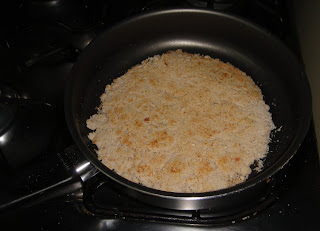
 To make a traditional mbejú are needed: starch, corn flour, egg, pork fat, thin salt, fresh cheese and milk.To make a variety named "mbejú avevo" (the Guarani phrase for "inflated cake") are used the same ingredients mentioned above but with the pork fat, the eggs and the cheese in larger quantities.To make the "mbejú de fariña" the starch flour is replaced by manioc flour.
To make a traditional mbejú are needed: starch, corn flour, egg, pork fat, thin salt, fresh cheese and milk.To make a variety named "mbejú avevo" (the Guarani phrase for "inflated cake") are used the same ingredients mentioned above but with the pork fat, the eggs and the cheese in larger quantities.To make the "mbejú de fariña" the starch flour is replaced by manioc flour. The starch is amassed with an amassing stick to then be sifted and weighed. The fat and the crumbled cheese are added. The mixture is whipped until it gets creamy. Eggs, salt and milk are added as the whipping continues. Finally are added the starch and the corn flour, mixing everything using the hands until having a thick powder-like preparation. A greased frying pan is let at the fire, to get a very high temperature. A layer of the mixture of about 1 and half centimeters is put in the pan, squeezing the borders with the back of a spoon. It is cooked for a few minutes, moving the pan so it cooks evenly without burning the center. Helped by a lid of the pan, flip the mbejú on the other side, finishing the cooking the same way mentioned above.
The starch is amassed with an amassing stick to then be sifted and weighed. The fat and the crumbled cheese are added. The mixture is whipped until it gets creamy. Eggs, salt and milk are added as the whipping continues. Finally are added the starch and the corn flour, mixing everything using the hands until having a thick powder-like preparation. A greased frying pan is let at the fire, to get a very high temperature. A layer of the mixture of about 1 and half centimeters is put in the pan, squeezing the borders with the back of a spoon. It is cooked for a few minutes, moving the pan so it cooks evenly without burning the center. Helped by a lid of the pan, flip the mbejú on the other side, finishing the cooking the same way mentioned above. Tereré is an infusion of
Tereré is an infusion of  The vast majority of people in Paraguay take their tereré with water infused remedial herbs such as
The vast majority of people in Paraguay take their tereré with water infused remedial herbs such as 
 First invented by the
First invented by the 

